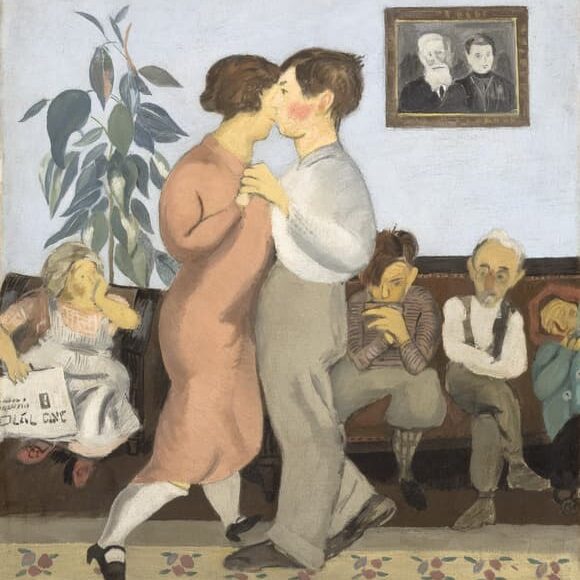Rare Marc Chagall Painting of His Father, Recently Restituted to the Descendants of Its Original Owner, on View at the Jewish Museum Beginning February 16, 2023

New York, NY, February 1, 2023—Marc Chagall’s painting Le Père (1911), which was recently restituted to the descendants of its original owner, will be on view at the Jewish Museum February 16, 2023, through January 1, 2024.
Completed in 1911, during a transformative period in the artist’s career, Le Père was among 15 works of art that the French Government restituted in April of 2022, part of an ongoing effort to return works in its museums that were stolen by the Nazis during World War II. The painting was restituted to the descendants of David Cender, the original owner, and sold at auction by Phillips in November 2022. Following the sale, Phillips’ team in New York worked with the buyer of the artwork and facilitated the loan to the Museum.
Claudia Gould, Helen Goldsmith Menschel Director, said, “The Jewish Museum is honored to show Chagall’s rare portrait of his father. The vast and systemic pillaging of artworks during World War II, and the eventual rescue and return of many, is one of the most dramatic stories of twentieth-century art, and one that continues to have repercussions today. It is imperative that the Jewish Museum tells these stories, most recently doing so with our exhibition Afterlives: Recovering the Lost Stories of Looted Art (2021). We are grateful to Phillips for facilitating this loan.”
Part of the collection of David Cender, a musical instrument-maker from Łódź, Poland, the work was stolen from him in 1940 before he was sent to Auschwitz with his family. While Cender survived, his wife, daughter, and other relatives were killed at Auschwitz. By the early 1950s, the painting had been reacquired by Chagall himself, who held a particular affinity for it. The artist was likely unaware of the history of the painting’s ownership. In 1988, the Musée national d’art moderne, Centre national d’art et de culture Georges-Pompidou in Paris received the painting by donation from Chagall’s estate. Ten years later, the work was deposited into the Musée d'art et d'histoire du Judaïsme in Paris, where it was on view for 24 years before research showed that the work should be and was restituted to Cender’s heirs.
Le Père is a dynamic portrait that signifies Chagall’s pivotal transition from art student in Saint Petersburg to one of the defining figures of European Modernism. During the winter of 1911-1912, Chagall moved into La Ruche, an artists’ commune on the outskirts of Montparnasse, France. The works he created over the next three years are among the most highly regarded of his career, with his portraits bearing particular significance. Le Père is an intimate portrait of the artist’s father Zahar, a quiet and shy man who spent his entire life working in the same manual labor job. Portraits of the artist’s father are rare within Chagall’s oeuvre. Far from the generalized symbols of lovers that dominated much of his later paintings, this early work is a remarkably personal and heartfelt depiction.
Press contacts
Daniela Stigh, [email protected] or 212.423.3330













